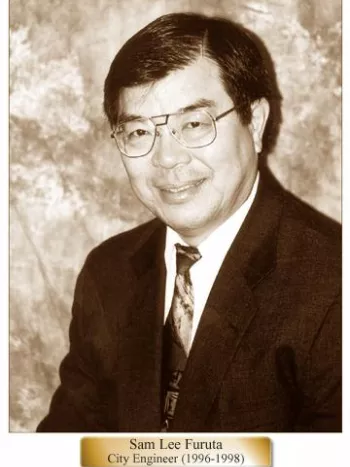
Sam Lee Furuta was born in Chicago, Illinois during World War II. He was given his father’s nickname, Sam, along with Lee, the name of the garage where the patriarch had been fortunate enough to find work. After the war, the family returned to Boyle Heights, from where they had been displaced as a result of the defense policies of the time.
Sam Lee Furuta grew up during a period of unimaginable advances in technology in a very rapid span of time. While attending Roosevelt High School, Furuta was exposed to a climate that glamorized technical fields. Sparked by the successful Soviet launch into orbit of the satellite Sputnik, teachers across the country pressed students with a talent for math and science to higher education.
“I became an engineer because my teachers aimed me in that direction.” Furuta said.
Furuta worked his way up the ranks without the benefit of a college degree. Notwithstanding he acquired the knowledge and aptitude to work in a burgeoning metropolis and become an accomplished engineer.
The population explosion in Los Angeles at the start of the twentieth century continued exponentially. As a result several components of the City’s infrastructure needed upgrading. In the late 1960’s, Furuta worked on several storm drain projects.
Yet several other challenges lingered. One of the most difficult and important was the treatment of wastewater that was the product of a mega-metropolis. The City’s sewers, which emptied into the Santa Monica Bay, had led the environmental group Heal the Bay to sue Los Angeles over inadequate water treatment.
As a result, under a federal consent decree, the City began the design phase to repair and expand the Hyperion Treatment Plant. Along with Robert Horii, Walt Naydo, Harry Sizemore of the Bureau of Sanitation, and Board of Public Works President, Felicia Marcus, Furuta fought to have Hyperion operate at full secondary status.
The twelve year, $1,000,000,000 project entailed rebuilding 80 percent of the behemoth treatment plant while 400,000,000 gallons a day of sewage ran through it.
Furuta also managed to turn around operations at the Terminal Island Treatment Plant, which had been chronically out of compliance with its operating permit, to operate for three years without any violations.
Sam Furuta was instrumental in forming the Wastewater Program Management Division at the Bureau of Engineering in 1986. Furuta worked on-site at Hyperion managing the construction division. In 1991, after initiating the construction of the upgrade and working on the engineering of the project, Furuta promoted to the Bureau of Sanitation. There he learned how the facility operators worked with the systems he helped design.
Sam Furuta left City service in 1998. He left behind a Bureau that was further aimed at strong Project Management with a better sense of keeping work on schedule and within budget.